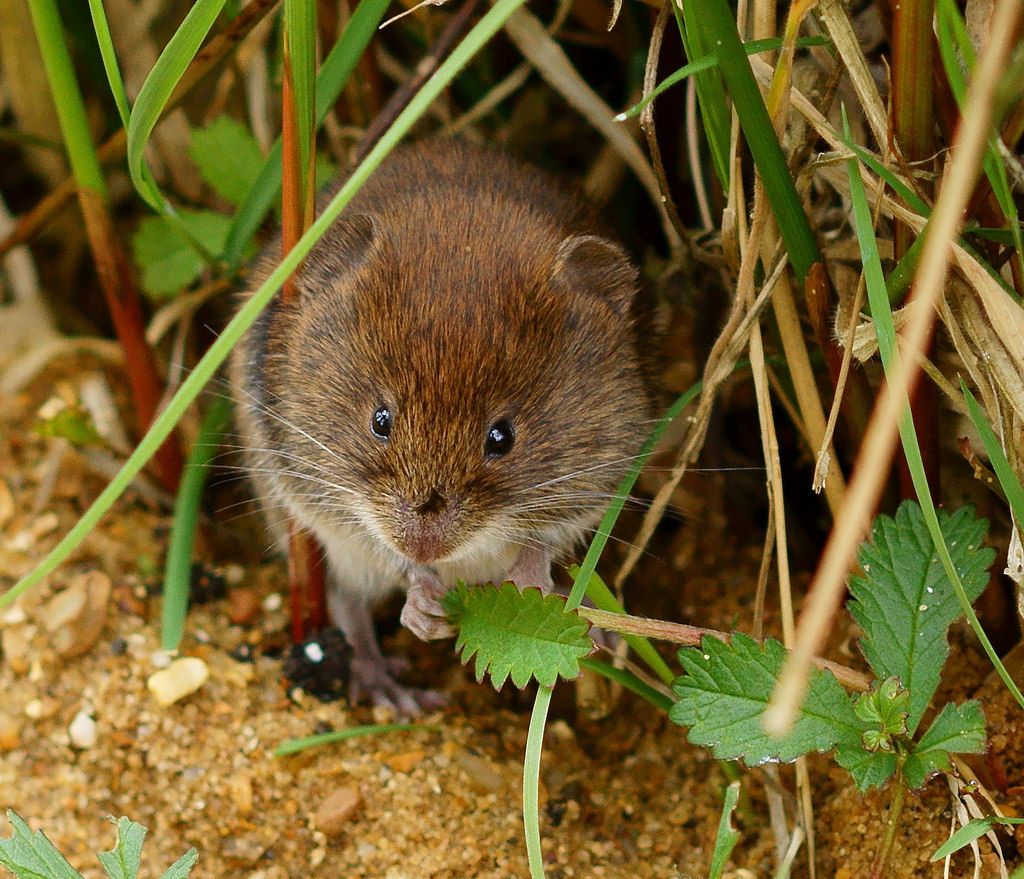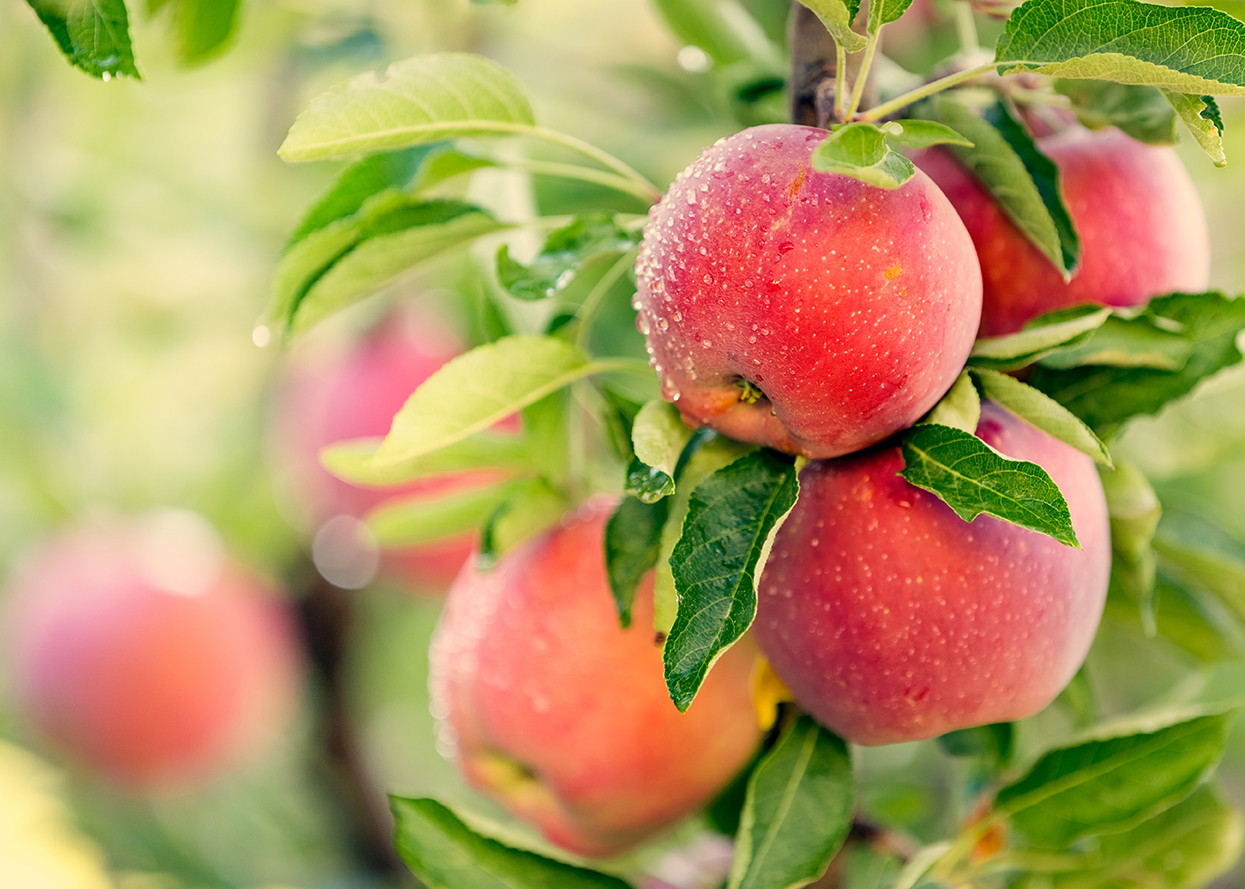Successful Pansy Planting with Plantskydd
Everyone wants the Pansies!

Pansies are the harbinger of spring in many climates. The modern hybrids these days can take cold temps that vacillate with warm days and even snow. They are a go-to flowering plant sought out by winter-weary gardeners from all over the world and situated in a place of pride at front and back doors, in urns, lining paths or even as a focal point to be viewed from inside an important window.
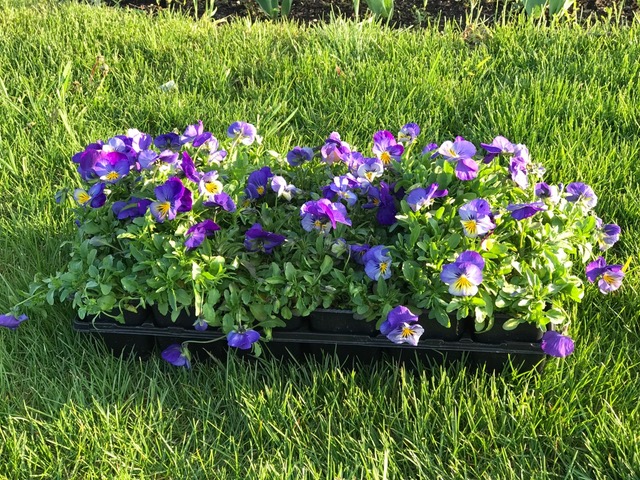
Upon arriving home from the garden center, take the pansy flat you purchased, set it on the grass and make sure the soil is moist and the flowers are dry. Spray it with ready-to-use Plantskydd spray, set on fine. In order to get the finest spray, make sure your sprayer nozzle is clean before you start and apply with good light so you can see what you’re doing. Three sprays total should be enough to cover all 18 plants in the flat featured. After spraying, let the flowers dry before planting. This saves spray by covering all flowers at once versus planting them and then and spraying each plant individually. It is also neater overall to do it this way rather than spraying pansies after planting in decorative containers near the house.
On the flip side, pansies are also irresistibly delicious to many critters like chipmunks, rabbits, deer. After a long hard winter, browsing animals are also seeking out food sources and need to feed their families.
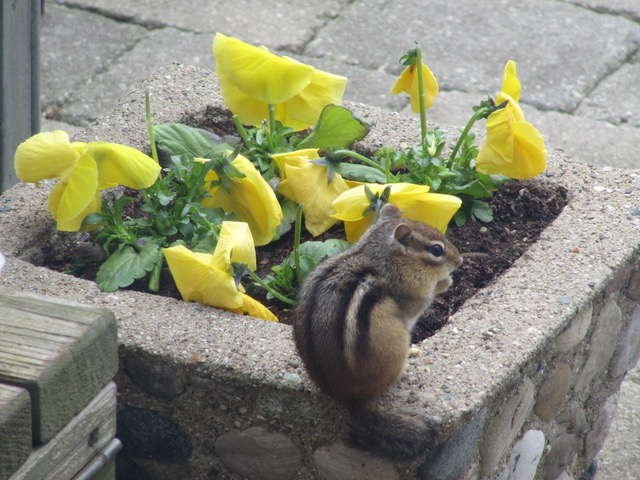
This photo shows “a good meal being had” by a chipmunk leaving behind flowerless stalks and soon there will be no flowers left in this old stone container. Most other animal browsers like rabbits and deer also love pansies and often are blamed for browsing damage, but chipmunks are faster than you think, get their fair share and are not to be underestimated.
Upon planting in a container like this, the gardener can heavily sprinkle in Plantkskdd granular formula under the flowers and on top of the soil. Lightly water to activate the granules. Take care with your watering regime by using a gentle spray and not causing the container to overflow or be blasted by a hard-pressured hose and potentially washing away the Plantskydd granules.
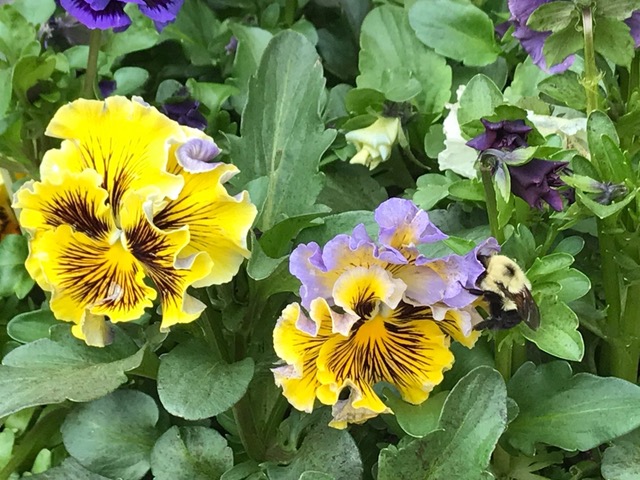
Look closely at the leaves and you’ll see dried Plantskydd RTU spray droplets. These plants were all sprayed in the flat when first purchased. After planting, the spray continues to fade but the unique formula with vegetable oil adheres to the leaves and lasts. Plantskydd does not affect pollinators with their important busy work but will support them by ensuring a garden is floriferous with flowers protected and pollinators will visit a garden more often with consistently flowering plants.
Summary for growing Pansies Sucessfully with Plantskydd Animal Repellent:
For RTU Spray/Mixed Powder Concentrate:
1. Lay newly purchased flats of pansies on lawn and spray with RTU liquid spray and let dry before planting.
2. Reapply twice more within pansy season, based on new growth when flowers are dry for 24 hours. (no irrigation or rain expected)
For Granular Formula:
1. Plant pansies in the ground or in containers and leave a margin from the top of the pot rim so that you don’t overwater and spill out the granular formula on the ground.
2. Heavily apply granular formula Plantskydd under the flowers on top of the soil line and gently water soil to activate the granular formula.
3. Reapply granular formula every 6 weeks until pansy season ends.
Note: Plantskydd is made from blood, vegetable oil and water. With proper application, this formula adheres to plants and doesn’t come off during irrigation and rain. The blood triggers a fear response in the animal browsers making them think there’s a predator in the area and it’s dangerous to get near those plants. While at the same time, it also acts as a fertilizer and pansies respond beautifully to the benefit of using Plantskydd granular or liquid spray.
Everyone wants the pansies, especially us. You can successfully grow and enjoy pansies for the entire spring season with help from Plantskydd.
Julia Hofley is a garden writer and lecturer from Michigan
Julia has learned three key lessons from her garden: there are also four seasons of animal browsing; weather truly affects how plants grow; and timing is everything when applying animal repellents successfully.




